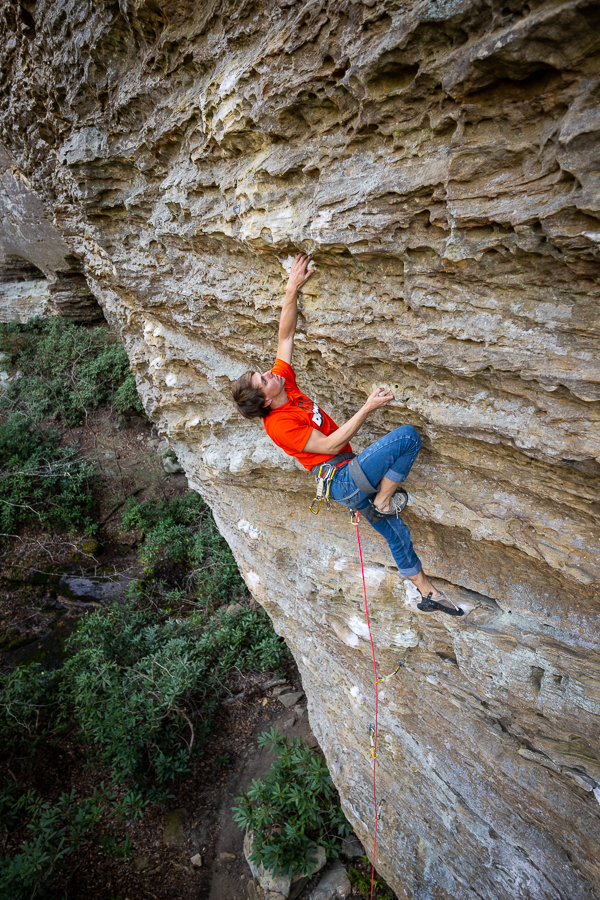
Climbing Guide Erik Kloeker on ‘A Portait of the Artist as a Young Man’ (5.11b), Bibliothek, Muir Valley, Red River Gorge, KY, USA.
- Abundant and Diverse Climbing Routes: Red River Gorge offers over 3000 routes, ranging from beginner to expert levels. The unique sandstone cliffs offer a variety of rock formations, ranging from steep overhangs and roofs with juggy pockets, to long slabs and crimpy iron rich edges. This diversity of routes and styles allows climbers of all levels to find a challenge that suits their abilities.
- Easy Access: Many of the climbing areas in Red River Gorge are easily accessible from the road or parking areas, which makes it convenient for climbers to quickly get to the routes they want to climb. Walls are commonly reached by a short 15-30 minute hike.
- High Quality Rock: The sandstone rock in Red River Gorge is known for its high quality, offering climbers excellent grip, and densely featured rock faces. The distinct makeup of the rock in Red River Gorge paired thousands of years of water erosion has left perfect holds for climbing on.
- Bolts: Despite great trad climbing in the area, the Red River Gorge is most well know it’s plethora of well bolted sport climbs, allowing for lots of well protected terrain and fun climbing.
- Beautiful Scenery: The natural beauty of Red River Gorge adds to the overall climbing experience. The area is known for its lush forests, scenic hiking trails, rushing waterfalls, and breathtaking views of the surrounding cliffs and valleys.
- Community: Red River Gorge has a strong and welcoming climbing community, with local climbers and businesses providing support and resources for visiting climbers. The community also helps to maintain and preserve the climbing areas in the region, ensuring that the rock remains safe and accessible for future generations of climbers.
